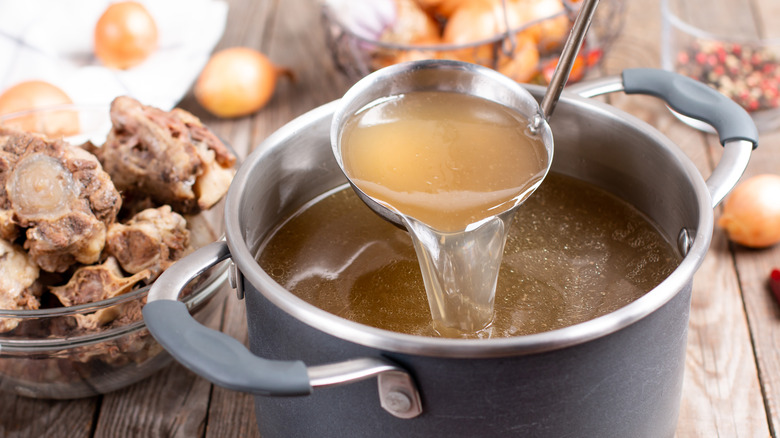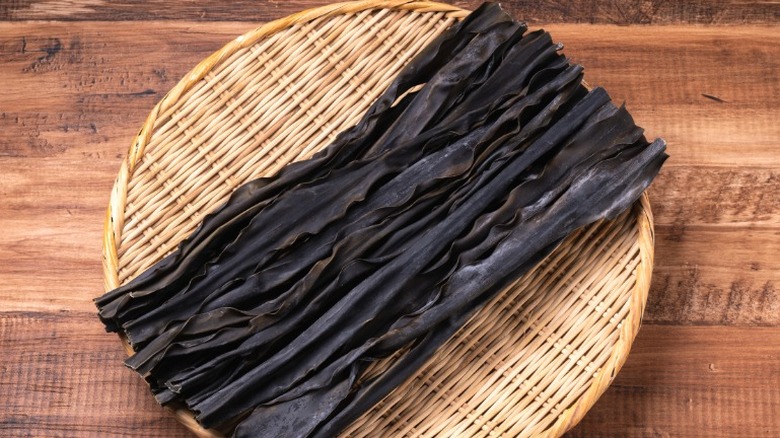Turn Homemade Stock Into An Umami Powerhouse With An Ancient Ingredient
We may receive a commission on purchases made from links.
You know as well as we do that making your own stock at home is a terrific way to boost the flavor of whatever you add it to, whether that's a soup, a stew, or a braise. But how do you make that stock even more robust? How do you put the thin, watery stuff they sell in cartons at the supermarket to shame? By adding some umami bombs, of course. You could upgrade soup with fish sauce, but why not use an ancient ingredient called kombu (aka edible kelp)?
We talked to Maricel Gentile, chef and owner of Maricel's Kitchen as well as the author of "Maricel's Simply Asian Cookbook," and she told us everything we need to know. "Kombu is pure umami from the sea," she says. "It adds depth and roundness without salt." In fact, umami was discovered in part thanks to kombu — in 1908, a Japanese chemist named Kikunae Ikeda extracted glutamic acid salts from kelp and determined it was the source of its savory flavor. (If "glutamic" sounds familiar, it might be because of monosodium glutamate, which adds umami flavor to all sorts of foods now that it's shed its bad reputation.) "The natural glutamates in the seaweed give stock a body that bones alone cannot achieve," Gentile says.
Rinse and soak kombu before putting it in your stock
So, how do you make use of kombu? Is it like any other vegetable or aromatic in stock, like the excellent stock-upgrader garlic, where you just plunk it into the pot and let it simmer for hours on end? As Gentile tells us, it's not quite so simple as that. "Rinse the kombu gently, then soak it in cool water for at least 30 minutes before heating," she says. The soak helps to rehydrate the dried kelp, releasing more of its wonderful umami flavor. Next, you should "bring the water up slowly, never letting it boil or it becomes bitter. Remove the kombu just before the water reaches a simmer, and then add your proteins or aromatics."
You might think that's a little more trouble than it's worth. Maybe carrots and onions get a little ho-hum after a while, but you don't have to do anything too fancy with them, do you? But as Gentile tells us, it's just the start of something better. With dried shiitake mushrooms and bonito flakes, kombu stock becomes a beautiful dashi, which is "the foundation for miso soup, ramen, or even a Filipino Tinola." That's one umami bomb we're happy to detonate in our pots.

